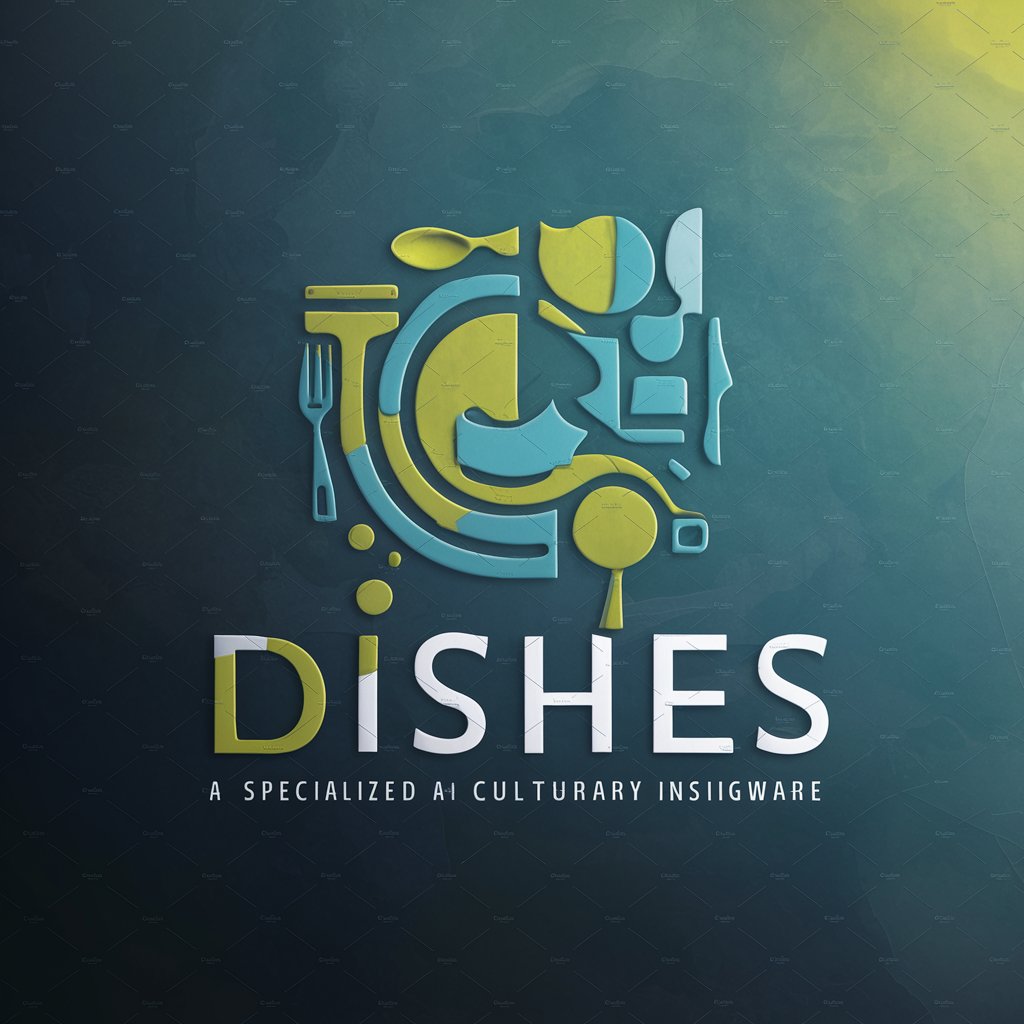Dishes - Culinary Dishware Insights

Welcome! Let's explore the world of dishware together.
Elevating Culinary Experiences with AI
What are the different materials used in making high-quality dishware?
Can you explain the cultural significance of porcelain in Chinese cuisine?
How does the design of a bowl affect its functionality in a culinary setting?
What are the historical origins of fine dining plates in Europe?
Get Embed Code
Introduction to Dishes
Dishes is a specialized GPT designed to discuss dishware, including plates, bowls, utensils, and other items used for serving food. Its primary purpose is to provide informative, culinary-focused insights on various types of dishware, exploring their uses, historical context, materials, and aesthetic qualities. Through engaging users with informative content, Dishes aims to enhance understanding of the nuances of different types of dishware, their cultural significance, and practical applications in culinary settings. For example, Dishes can elucidate the differences between porcelain and stoneware, the significance of using specific types of bowls for certain cuisines, or the evolution of cutlery design over centuries. Powered by ChatGPT-4o。

Main Functions of Dishes
Educational Insights
Example
Explaining the history and unique properties of bone china versus porcelain.
Scenario
A user curious about the best material for formal dinnerware receives a detailed comparison, including the origins, manufacturing process, and reasons for the prestige associated with bone china.
Culinary Applications
Example
Advising on the appropriate use of different types of serving platters in various culinary traditions.
Scenario
A user planning a themed dinner party learns which types of platters are traditionally used in Mediterranean cuisine, enhancing the authenticity and presentation of their dishes.
Material and Care Guidance
Example
Providing information on how to properly care for and maintain copper cookware.
Scenario
A user who recently acquired a set of copper pans receives advice on cleaning, polishing, and maintaining them to prevent tarnishing and ensure longevity.
Ideal Users of Dishes Services
Culinary Enthusiasts
Individuals passionate about cooking and presentation, seeking to enhance their knowledge on how different types of dishware can influence the dining experience. They benefit from understanding the aesthetic and practical implications of their dishware choices.
Professional Chefs and Restaurateurs
Professionals in the culinary industry who aim to optimize their service and presentation by selecting dishware that complements their cuisine's aesthetic and practical needs. Dishes provides them with the knowledge to make informed decisions.
Collectors and Historians
Individuals interested in the historical and cultural aspects of dishware. They benefit from Dishes' insights into the evolution of dishware designs, materials, and uses across different cultures and eras.

How to Utilize Dishes Effectively
Start Your Journey
Initiate your exploration at yeschat.ai to engage with Dishes without the need for registration or a ChatGPT Plus subscription.
Identify Your Needs
Determine the specific aspect of dishware you need assistance with, whether it's material, history, or use cases.
Engage with Dishes
Pose your questions or describe your dishware-related scenario to receive tailored, informative insights.
Apply Insights
Utilize the provided information to enhance your culinary practices, from setting a table to selecting the right dishware for different cuisines.
Explore Further
Don't hesitate to delve deeper into specific areas of interest, as Dishes can provide comprehensive details on a wide range of dishware topics.
Try other advanced and practical GPTs
Breakfast
Energizing Your Mornings with AI

StatQueen
Empowering Your Statistics and Stories

Storyboard Script
Bringing Stories to Life with AI

Kenergy™ Trademark Maven
Empowering startups with AI-driven trademark insights.

Water Polo Positions Strategist
Strategize, Enhance, Win with AI

SAT Math Tutor
Master SAT Math with AI-Powered Tutoring

Chef mate AI pro
Elevate your cooking with AI
Wine Recommendations
Discover the perfect wine with AI

SEO Blog Title Writer
Craft Winning Titles, Boost Your SEO

Influencer Marketing Ad Compliance Advisor
AI-driven guidance for ethical influencer marketing

Software
Empower Development with AI

Joseph Lombardi's booking agent
Crafting compelling pitches with AI

In-Depth Q&A about Dishes
What materials are commonly used in making dishware?
Dishware can be crafted from various materials, including ceramic, porcelain, stoneware, glass, and metals like stainless steel. Each material offers unique aesthetic and practical qualities, influencing the dishware's durability, heat retention, and appearance.
How does the history of dishware vary across cultures?
The history of dishware is rich and diverse, reflecting cultural traditions and technological advancements. For example, porcelain dishware originated in China during the Tang dynasty, while the use of wooden and metal dishes was more prevalent in European medieval times.
What are the key considerations when selecting dishware for a restaurant?
When selecting dishware for a restaurant, consider the cuisine type, the restaurant's aesthetic, the durability of the dishware, and how the dishware complements the presentation of the food.
Can you explain the role of dishware in food presentation?
Dishware plays a crucial role in food presentation, enhancing the visual appeal and overall dining experience. The choice of color, shape, and size of the dishware can complement the food's texture, color, and arrangement, making the meal more enticing.
What are some eco-friendly dishware options?
Eco-friendly dishware options include those made from sustainable materials like bamboo, recycled glass, or biodegradable composites. These choices offer a lower environmental impact while still providing durability and style.
